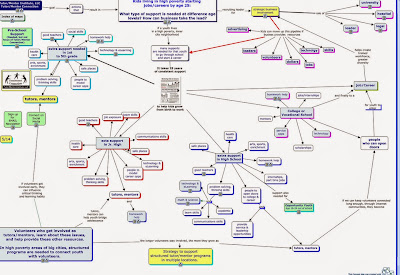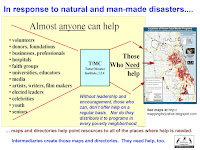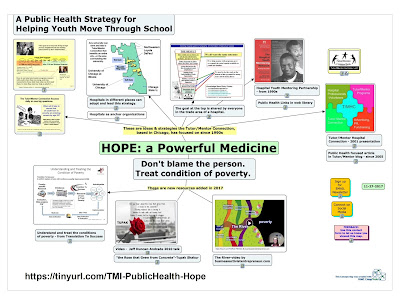I've been following these stories for over 30 years, as some of the media stories shown at the left, illustrate. If you open the "violence" tab on this site you can scroll back through 10 years of stories. In all of these I've proposed non-school tutor/mentor programs as a prevention strategy, not as a stop-the-shooting strategy.
 If you're concerned about this problem, here's a web site that provides a running score on the shootings and homicides in Chicago. It's aptly named "Hey Jackass".
If you're concerned about this problem, here's a web site that provides a running score on the shootings and homicides in Chicago. It's aptly named "Hey Jackass".While homicides and shootings in Chicago were much higher in the 1980s and early 1990s, there have been a steady flow of shootings and deaths, every year for the past 35-40 years. The violence of the past few years actually distorts a reality that overall, crime is on the decline.
I started leading a non-school, volunteer-based tutor, mentor and learning program in 1975 and continued to lead such programs through 2011. I've always advocated for a program model that drew volunteers from different backgrounds into the program, and into the lives of kids and neighborhoods. This model depends on programs being able to sustain themselves for many years, so a youth joining in middle school years can stay involved through high school...or for six to eight consecutive years.
That's why much of my four-part strategy focuses on public education and drawing needed resources to programs.
What troubles me is that when a shooting takes place, I have difficulty offering tutor/mentor programs as a short term solution that would motivate a youth to leave a gang, or choose not to pick up a pistol, or rifle, and get in a car with the intent of going out and killing another person.
I created this graphic to illustrate what I propose as a long-term solution, with short term actions.
This arrow shows a timeline of birth to work, which stretches up to 25 or 30 years for some people. When a shooting takes place, involving a young person between the age of 16-34 (with victims much younger and much older), the immediate response is triage. How do we get the guns off the street? How do we get kids out of gangs? Or how do we get gang members to stop shooting, wounding and killing each other? How do we heal the wounded, or counsel the relatives of the dead? How do we help kids focus on school and their future when they don't know if the next stray bullet will hit them?
That's the yellow highlighted portion of this timeline.
Dr. Gary Slutkin and CureViolence offer an answer with their program.
‘Interrupters’ help reduce violence in New York City https://t.co/uvNkBkezVl via @WSJ— CureViolence (@CureViolence) October 2, 2017
A popular solution is the MyBrother's Keeper program supported by President Obama and Youth Guidance
We are the ones. Watch our new @MBK_Alliance video featuring President @BarackObama, @StephenCurry30, and @chancetherapper — then take action at https://t.co/YfrfTjqd5Z. #TheKeepersCode pic.twitter.com/LFCKfRi1A8— The Obama Foundation (@ObamaFoundation) December 27, 2017
Earlier in 2017 I pointed to a WBEZ story about the cost of a jobs program targeting boys and men in high violence neighborhoods. Read it here.
However, if we only invest in programs focusing on the people in the high risk pool, or in gangs and the justice system, we're going to be dealing with this problem many years from now, because we've not put in place a prevention strategy intended to reduce the number of young people who go into this risk group.
On the opposite end of my timeline are advocates for robust pre-school programs (highlighted in light grey). Dr. James Heckman, a Nobel Prize winner in Economics, posted this Tweet, saying the "achievement gap starts at birth".
Voices For Illinois Kids has been an advocate for early childhood programs since the 1990s. I encourage you to dig through their web site to find ideas and resources. Look at the data offered in the KidsCount data book, published annually.The achievement gap starts at birth. High-quality, zero-to-five education has the greatest impact on children, families and society as a whole. https://t.co/mxZn1kxJ2B pic.twitter.com/dyF0YkTNRS— Prof. James Heckman (@heckmanequation) December 27, 2017
If we build strong pre-school programs and strong re-entry and opportunity youth programs, we've addressed both ends of this problem, but still need to address the support kids in high poverty and distressed situations need from first grade through high school, post high school and into adult jobs and careers.
In the hub-spoke graphic I posted above, I describe a strategy where a youth program, or a school, are places where kids connect with adults, experiences and support systems that extend far beyond what they normally see in their family or neighborhood. This strategy presentation (PDF) visualizes that idea and shows the role of business and professional groups to help make such learning opportunities available in every high poverty neighborhood.
In the Tutor/Mentor web library you can find links to dozens of different types of youth serving organizations. Each could provide ideas that might be duplicated in other places. You just need to spend time looking at these sites.
I've been writing stories like this for more than 20 years, but too few people are reading and responding. Thus, I'll end with another tweet, where a young Chicago women is calling on adults to provide the resources kids need to grow up safely and become part of the American dream.
My name is Eva, & I'm a 19 year old from the South Side of Chicago. I recently did a TED talk describing what we REALLY need to stop Chicago's gun violence problem: resources. I'm trying to help my people get free, & I'd appreciate if you share my story: https://t.co/Fv7WNPNWl4 pic.twitter.com/LrF9jawVc1— eva maria 🌹 (@imyagirleva) December 28, 2017
I hope you'll take some time over the next few weeks to open the links, view the videos, and then share this and other articles I write with people in your own networks, in Chicago, and in other cities throughout the world.
Note that in the graphic I posted above I included a map showing poverty in Chicago. Here's a different version. Youth support systems need to be fully available in every one of these neighborhoods. You can't have some pieces on the North site, some on the West side, few on the South Side, etc. and expect the system to deliver the outcomes you want.
It will take the consistent, long-term involvement of people from many sectors to build and sustain this system and make it available in every high poverty neighborhood of every city and state in America....as well as in other countries.
Ideally, people would have started building this system 25 years ago. The next best time to start is NOW.
12-11-18 update - gun violence in Philadelphia - web site. The ideas I share can be used in any city, because every city has some of the same problems
12-11-18 update - gun violence articles on MappingforJustice blog
If you value what I write please make a contribution using the PayPal button on my "go fund me" page. Click here.

































